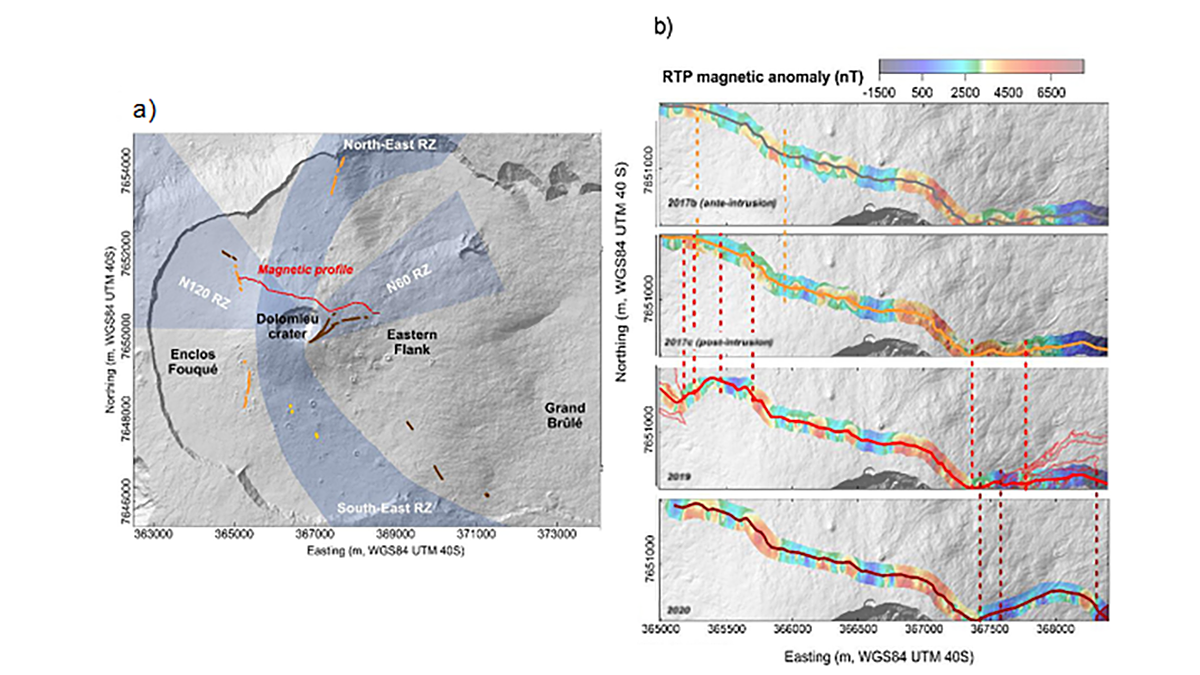Editors’ Highlights are summaries of recent papers by AGU’s journal editors.
Source: Journal of Geophysical Research: Solid Earth
Volcanic edifices are complex structures whose evolution over time is driven by various dynamic processes such as magma migration and lava flow, gravity-driven landslides, and volcanic plume hazards. Volcanoes therefore consist of a juxtaposition of diverse volcanic materials with widely contrasting petrophysical properties. This complexity makes geophysical imaging of volcanic structures both spatially and temporally challenging. And while carrying out such studies is key to better constraining the geometry and dynamics of eruption mechanisms, repeated geophysical investigations to track such changes over volcanoes remain rare.
Gailler et al. [2023] overcome this paucity of ‘4D’ volcano studies by repeating a 3,780-meter-length profile ground magnetic field close to the summit of the active Piton de la Fournaise volcano on Réunion Island in the Indian Ocean from 2017 to 2020. They were able to image areas along the profile that show demagnetization. They further the temporal evolution of the magnetic anomalies to 3D magmatic intrusions and magma paths deduced from InSAR surface displacement data.
The authors suggest that the rapid evolution of the inner structure is driven by magmatic dike emplacement and hydrothermal fluid transfer that results in alterations of the rock over the time scales of the study. The changes in magnetization are interpreted as simultaneously occurring thermal anomalies and mechanical heterogeneities, which are caused by thermomagnetic and piezomagnetic effects and by electrokinetic variations. This approach offers new perspectives for the spatiotemporal observation of active volcanoes and demonstrates the capability of magnetic monitoring methods, especially if combined with unmanned aerial vehicle magnetic surveys.
Citation: Gailler, L., Labazuy, P., Dumont, Q., Froger, J.-L., Peltier, A., Finizola, A., et al. (2023). Volcano-magnetic signal reveals rapid evolution of the inner structure of Piton de la Fournaise. Journal of Geophysical Research: Solid Earth, 128, e2022JB025290. https://doi.org/10.1029/2022JB025290
—Agnes Kontny, Associate Editor, JGR: Solid Earth

